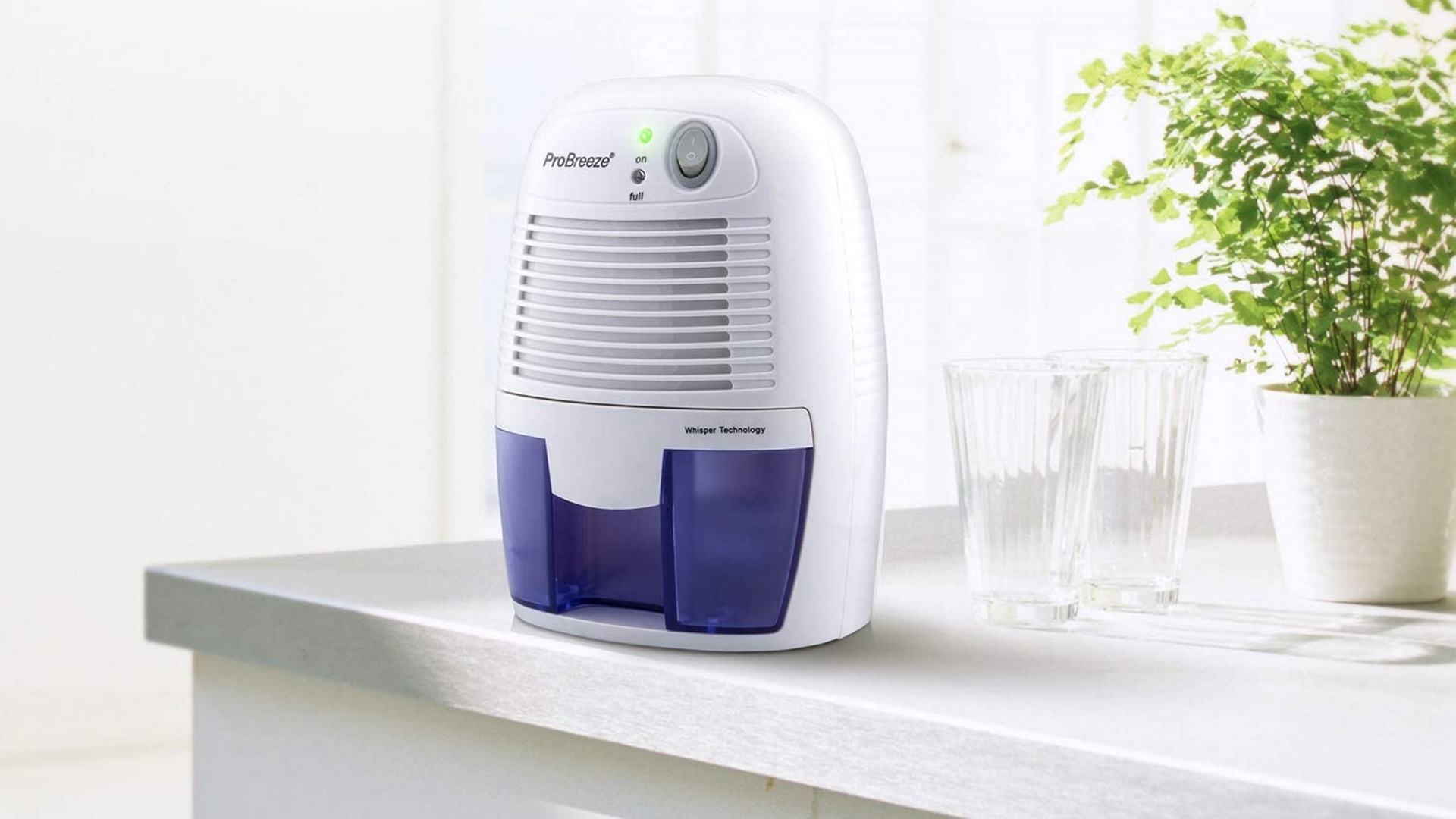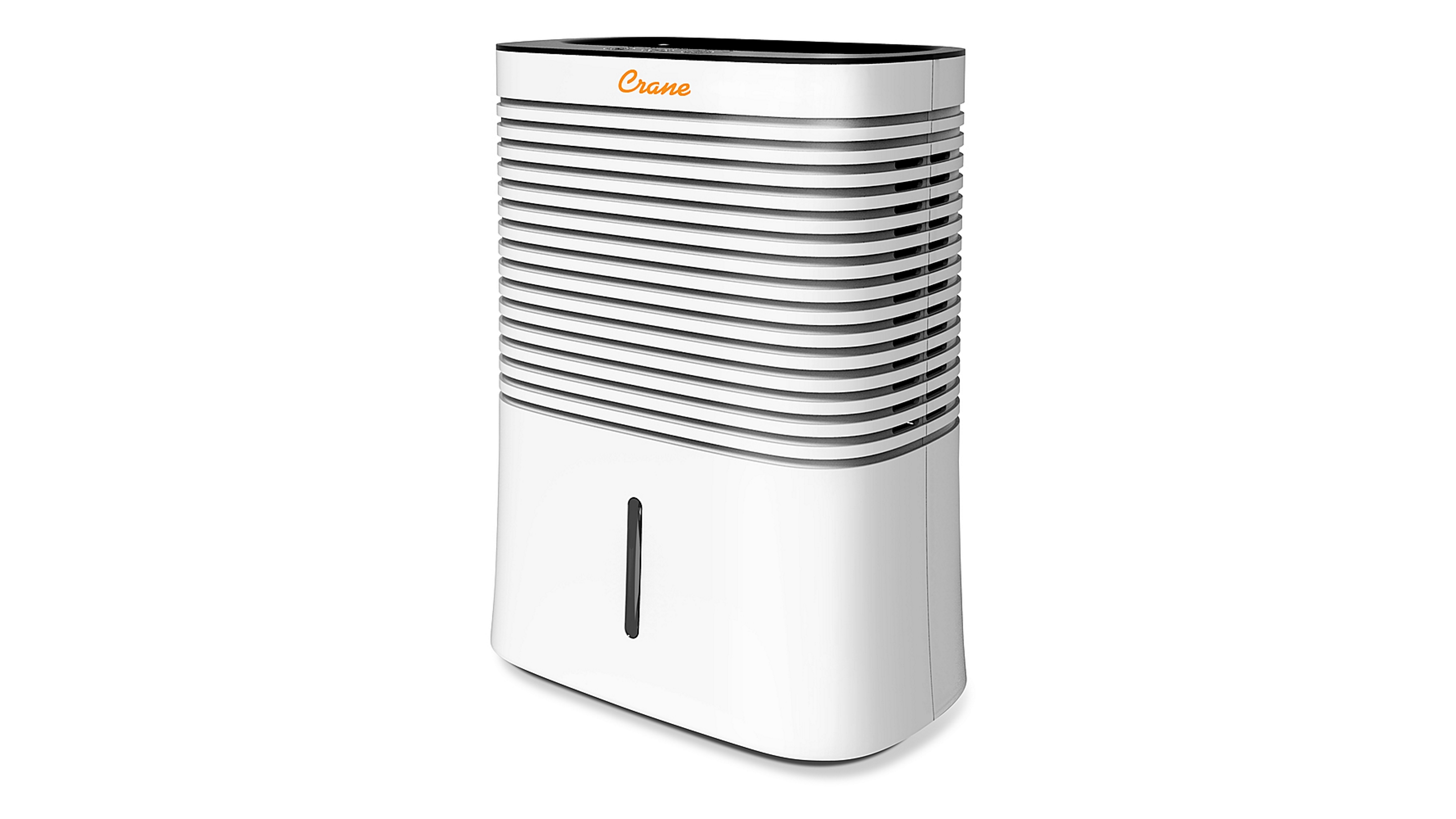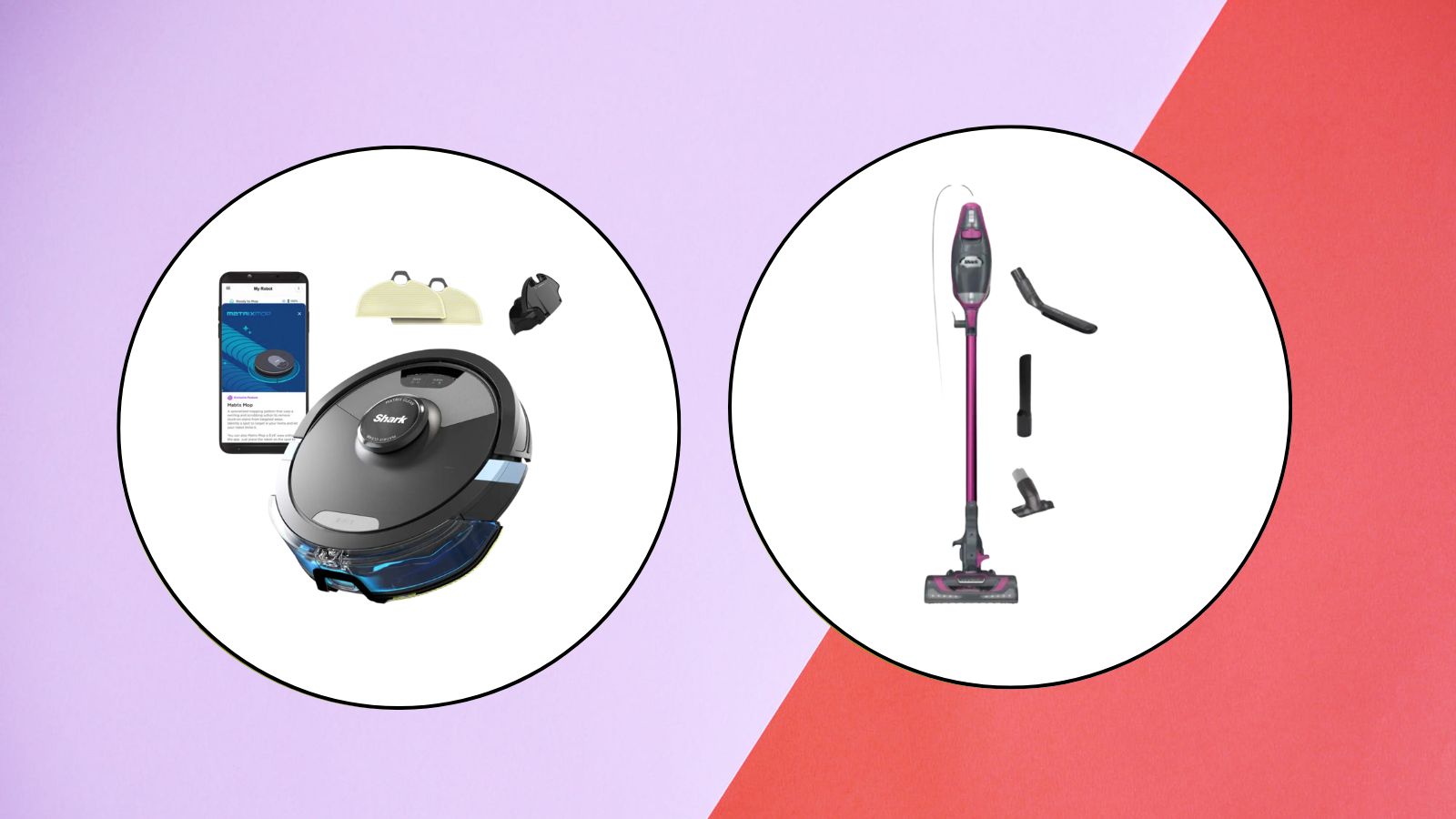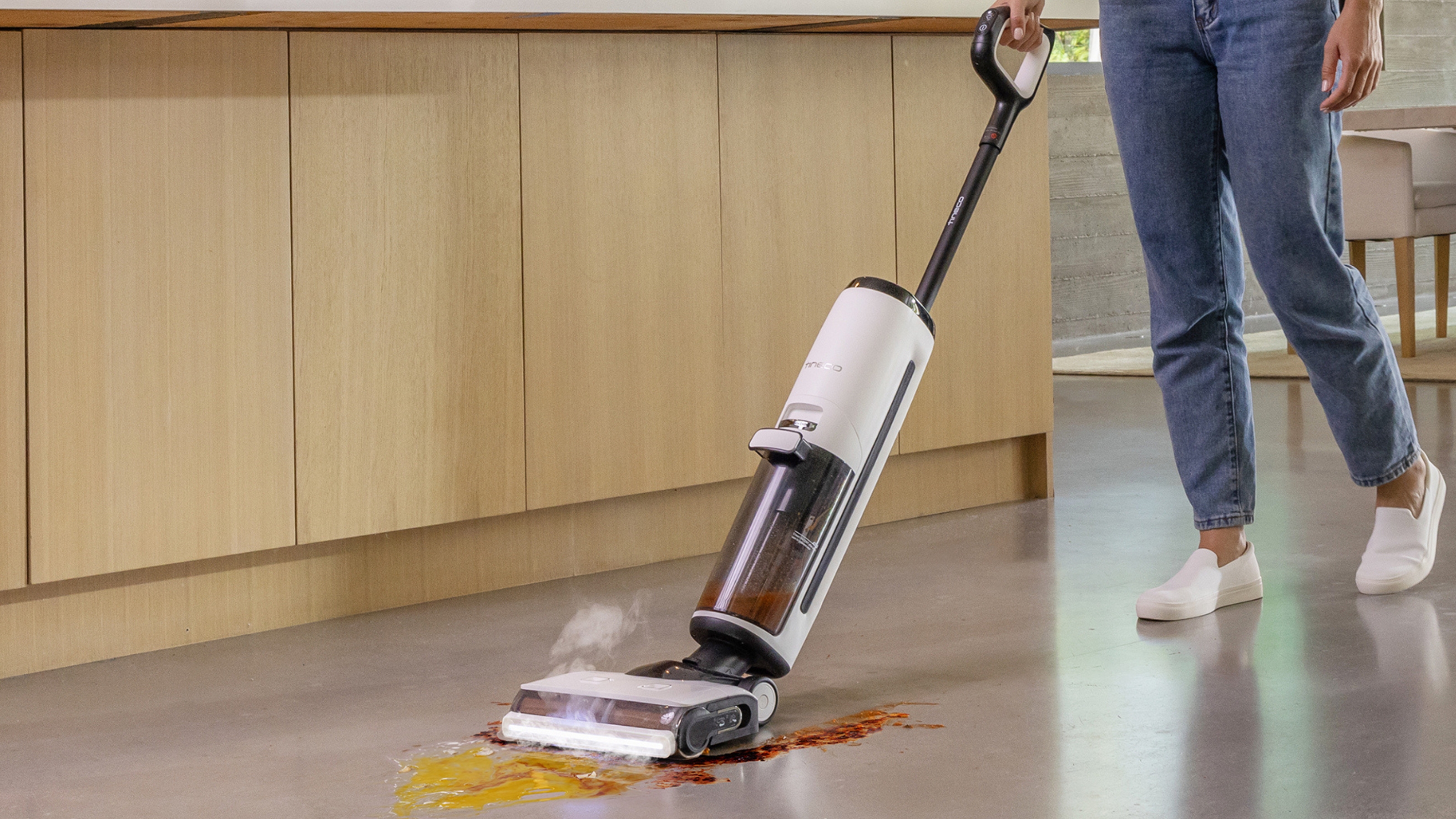

As we move through the seasons and all of the unpredictable weather they bring (depending on where you live, of course), one of the problems that arise most often is dampness and moisture from the air, which causes its fair share of issues for the home. But with the best dehumidifier in your arsenal, you can wave goodbye to the headache of condensation, mold, and resulting bacteria.
Dehumidifiers work by directly removing the moisture from the air and converting it into water that you can easily dispose of. Most have sensors that can determine the moisture levels in your home and power on and off accordingly, saving energy. The best dehumidifiers even help in unexpected areas of life, like making laundry-drying time much faster or purifying the air in a space.
You will need to choose between two types of dehumidifier: desiccant and refrigerant. Desiccant dehumidifiers use a material that absorbs moisture and condenses it, while refrigerant dehumidifiers have a cool metal plate that converts the air into liquid as it works. While the former is capable of working in colder temperatures, it also uses more energy.
We've looked at the best dehumidifiers you can buy right now, ranking them based on capacity, design, and any additional features that might make parting with your cash more worthwhile. And, if you're interested in improving the air quality in your home even more, then take a look at our guide to the best air purifiers.
Keep reading to see which dehumidifiers we rate highest, as well as more buying advice to help you make the best choice.
The best dehumidifiers in 2025

1. GE ADEL35LZ Portable Dehumidifier
Specifications
Reasons to buy
Reasons to avoid
With hidden wheels and pocket handles, the GE 35-pint portable dehumidifier is ideal for anyone who needs a machine that will work in different environments. This portability, plus the large extraction rate and humidistat, also make it our choice for the best basement dehumidifier.
The digital LED controls on the GE dehumidifier make it easy to work with, and there is a drain hose connection if you want to operate it continuously. Set the humidistat to your desired level, and it will shut off automatically when the 8.4-pint tank is full. You can also set the timer if you only want the dehumidifier running for a certain amount of time. All of this, and it still manages to be Energy Star certified, meaning it's designed to waste less energy than other dehumidifiers.

2. Frigidaire FFAD2233W1 Dehumidifier
Specifications
Reasons to buy
Reasons to avoid
The Frigidaire FFAD2233W1 Dehumidifier is a great pick for small to medium-sized spaces, removing up to 22 pints of moisture across a maximum of 400 sqft. The appliance comes with a removable filter that helps simultaneously capture dust from the air as it dehumidifies.
The front-loaded bucket makes it easy to empty the tank, or you can opt for continuous drainage. Frigidaire also claims that the dehumidifier is as quiet as a library on its lowest of three speed settings, and its Energy Star certification means it won't guzzle up too much energy.

3. CRANE EE-1000 4 Pint Dehumidifier
Specifications
Reasons to buy
Reasons to avoid
A great compact dehumidifier ideal for the bathroom or a closet, the 4-Pint Crane EE-1000 aims to tackle everything from dust and odors to mold and condensation. Because of its smaller size and lightweight design, it's portable enough to pop in the bathroom to remove excess moisture from your shower or bath, and it suitable for use in areas up to 300 sqft.
Crane promises that operation is 'whisper quiet' (though we couldn't find exact information on this) and, to save energy, powers down as soon as the 2L tank is full. There is also a timer function and two different speed settings to choose from.

4. Insignia 35-Pint Dehumidifier
Specifications
Reasons to buy
Reasons to avoid
As a dehumidifier on this list that is capable of keeping air moisture at a comfortable level in areas up to 2,000 sqft, we recommend the Insignia 35-pint dehumidifier for basements or crawl spaces where the job of keeping humidity at bay may be a bigger one. Just make note that a lack of castors means it's less portable than some other examples on this list.
Capable of removing up to 35 pints of moisture each day, the sizeable 12.5-pink tank will also mean you are emptying much less often. But, of course, you can also use the rear hose for continuous drainage if you prefer to be even more low maintenance, and you can keep the levels just how you want them with the adjustable humidistat.

5. Pro Breeze 500ml Compact Dehumidifier
Specifications
Reasons to buy
Reasons to avoid
Perfect for smaller spaces like laundry rooms, the Pro Breeze Electric Dehumidifier is a compact option that works best in areas up to 215 sq ft. Despite its size, the machine will collect around 9oz of moisture daily, making it more than capable of pleasing occasional users. It's also quiet, making it perfect for the bedroom.
When the 16oz water tank is full, the dehumidifier will automatically shut off, and the design makes it super simple to remove the tank and empty it. The only caveat is that - as with a lot of mini dehumidifiers - it won't work in cold temperatures below 41 degrees, so it might not be the best choice for those living in colder parts of the country.

6. AIRPLUS 70 Pints Dehumidifier
Specifications
Reasons to buy
Reasons to avoid
Though it has a relatively tiny tank capacity compared to its overall size, the AIRPLUS 70-Pint dehumidifier is a great choice if you want to remove moisture across your whole home. You can place it in a basement or RV or set it up in the living room and let it get to work. It's designed to cover 4500 sqft, which is the largest surface area on this list.
The dehumidifier also boasts four separate modes: one quiet enough for night-time running, one for optimal humidity levels, and one for drying laundry. So just pop it by your damp clothes and watch it cut the time it takes from washing to putting away significantly.

7. Vacplus VA-D1901 Dehumidifier
Specifications
Reasons to buy
Reasons to avoid
Specifically designed for basements and similar areas of the home, the Vacplus dehumidifier removes up to 50 pints of moisture from the air per day with four separate modes of operation, including 'rain,' 'dry' and sleep. The first sets humidity in the environment to the optimal level of 45%, while the second initiates continuous running for when you're trying to dry laundry.
The biggest plus of the Vacplus offering is its built-in humidity sensor. For those who have trouble remembering to turn their tech and devices on and off, the sensor will automatically alter the dehumidifier's mode depending on how much moisture it detects in the air. It's also quiet and Energy Star certified to keep bills down.
How to choose the best dehumidifier for your home

Why do I need a dehumidifier?
Poor ventilation is the main reason for purchasing a dehumidifier. Most households regularly shower or bath, cool and wash clothes, all of which use a lot of hot water that creates steam. If there’s no way for the moisture to escape through windows or vents, condensation and dampness begin to build. This is where a dehumidifier helps prevent this from happening and removes excess water from the air to help dry your clothes.
How does a dehumidifier work?
The way that dehumidifiers remove unwanted moisture from the air varies. For compressor models, the air is taken in through a filter and coils inside. The cold temperature of these coils converts the moist air into water, which is then deposited into the tank. Meanwhile, desiccant dehumidifiers take in the moisture via an absorbent, which the machine heats to convert into water.
Do dehumidifiers cool rooms?
Dehumidifiers do not work the same as air conditioners, which often operate as dehumidifiers. Confused?
As stated above, compressor dehumidifiers use their interior components' temperature to operate, so it's actually beneficial for them to be put to work in warmer spaces. This means that there is more contrast between the temperature of the air and the colder temperature of the coils that the dehumidifier uses to convert moisture into water.
What type of dehumidifier should I get?
Not to be confused with a humidifier, which does the opposite of a dehumidifier and adds moisture to the air in your home, you can buy two different types of dehumidifier—first, a compressor (sometimes known as a refrigerant) or second, a desiccant. Compressors can remove a more significant amount of moisture daily and are cheaper to run, while desiccant dehumidifiers work better in colder temperatures and are often quieter. They’re also usually smaller and lighter than compressor models.
What extraction rate and tank size should I go for?
The extraction rate you’re looking for really depends on where you live and what you’re using the dehumidifier for, but in the US, you can aim for one that extracts between 1.5-4 pints a day.
The tank size of the products on our list varies. The size you need will depend on a) whether you will turn your dehumidifier on all day, b) whether you’re at home and can empty it periodically, c) what level of humidity you’re dealing with, and d) how much space you have.
Do I need a laundry mode?
If you often hang your clothes to dry around your home, opt for a dehumidifier with a dedicated laundry mode. It’ll work with the additional humidity caused by your wet clothes and reduce the time it takes for your clothes to dry. Win-win?
- You've reached the end of the page. Jump to the top^
Join our newsletter
Get small space home decor ideas, celeb inspiration, DIY tips and more, straight to your inbox!

Caroline has been part of the Real Homes ecommerce team since the start of 2021, after working for the last decade as a journalist across publications in technology, entertainment and various other areas. She took over smart homes content for the site shortly after, and can now be mostly found swooning after the latest gadget or smart speaker release. In her spare time, she's usually obsessing about space-saving and DIY hacks for small spaces, and how to affordably make a rental feel like a home.
-
 How to clean windows without streaks — 5 easy steps that cleaning pros always follow
How to clean windows without streaks — 5 easy steps that cleaning pros always followThis method on how to clean windows is favored by professional cleaners. We've asked them for the steps you should follow, plus picked cleaning buys
By Eve Smallman Last updated
-
 The latest Shark sale deals are perfect for pollen-proofing your home — with up to $150 off our favorite vacuums
The latest Shark sale deals are perfect for pollen-proofing your home — with up to $150 off our favorite vacuumsWe found the latest Shark sale deals on vacuums that are sure to be swooped up, especially as spring blooms trigger pollen allergies and we're in need of extra cleaning
By Danielle Valente Published
-

 Tineco Floor One S7 steam wet-dry vacuum review — spotless floors with minimal effort
Tineco Floor One S7 steam wet-dry vacuum review — spotless floors with minimal effortOur contributing editor, Camryn Rabideau, tests the Tineco Floor One S7 steam wet-dry vacuum in her New England homestead property
By Camryn Rabideau Published
-
 Amazon vacuum cleaners to nab during the retailer's Big Spring Sale — save up to 60% off our go-to small-space finds
Amazon vacuum cleaners to nab during the retailer's Big Spring Sale — save up to 60% off our go-to small-space findsChecking out the savings on Amazon? Vacuum cleaners are a must-buy during their first Big Spring Sale — here are our favorites up to 60% off
By Danielle Valente Published
-
 The Home Edit Walmart cleaning collection has just debuted with finds from $3
The Home Edit Walmart cleaning collection has just debuted with finds from $3Spring cleaning, anyone? The Home Edit Walmart cleaning collection has hit shelves with picks from $3
By Danielle Valente Published
-
 How to clean carpet on stairs — 3 simple steps to a spruced up staircase
How to clean carpet on stairs — 3 simple steps to a spruced up staircaseWant to know how to clean carpet on stairs? Our experts explain the simple steps to a sparkling stairway without too much elbow grease
By Andy van Terheyden Published
-
 The Home Depot backyard and patio cleaning supplies we're stocking up on before spring
The Home Depot backyard and patio cleaning supplies we're stocking up on before springDon't forget the outdoors when spring cleaning — The Home Depot backyard and patio cleaning buys from $11 will assist with tidying up
By Danielle Valente Published
-
 The Shark Detect Pro vacuum and other models are on sale for St Patrick's Day — perfect picks for your spring clean
The Shark Detect Pro vacuum and other models are on sale for St Patrick's Day — perfect picks for your spring cleanWhether you're eyeing the Shark Detect Pro Vacuum or Shark Pet Cordless Stick Vacuum, shop the St. Patty's Day sale for a discount on the best vacuums on shelves
By Danielle Valente Published